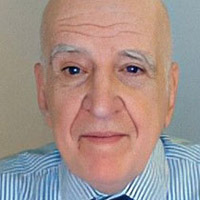Business Employee Surveys

Business Employee Surveys
By Patrick Gilbert, David Slavney, and David Tong
Employee motivation is vital to business success. Increasingly, it distinguishes companies that thrive from those that fail to survive. A highly motivated workforce delivers superior products and services, and this in turn leads to greater customer satisfaction and improved sales performance.
Given the implications for business success, the measurement of employee motivation and commitment through the use of employee surveys continues to increase, from an estimated 50 percent of U.S. organizations in the 1980s (Delaney, Lewin, and Ichniowski, 1988) to more than 70 percent in the 1990s (Paul and Braken, 1995). Survey findings have become a valued management information tool and are often used to identify and prioritize issues for action, monitor the effectiveness of change initiatives, establish performance objectives for managers, and provide metrics for the “people” quadrant of the balanced scorecard.
Because survey results are increasingly being used to guide management decisions, it is important to achieve a high level of participation to ensure that the findings accurately reflect the key concerns of employees. When response rates are low, the validity of the results will be called into question, and sufficient data may not be available for organizational subgroups or locations, hindering local action planning and follow-up. Moreover, a low response rate sends an ominous message that the workforce is disengaged and employees feel they lack a collective voice in communicating their concerns to management. All of this diminishes the return that an organization receives on its considerable investment in the survey research effort.
Participation in an employee survey is a direct result of how well the survey process is designed and implemented. Simply put, well-orchestrated surveys lead to higher return rates. Following are 10 “best practices” for survey design and implementation and the implications of these best practices for employee response rates. Also included are key questions to ask at each step to ensure that your organization is adhering to these practices.
Establish clear goals and objectives. In the early planning stage, articulate the overall goals and objectives of the survey and define the anticipated return on investment. These objectives should be developed with management input and clearly communicated to employees in order to demonstrate the importance of the process. Without long-term objectives that are clearly linked to company performance, the survey may fail to elicit the management support and secure the resources required for success.
Key question: What does the organization hope to achieve and what are the implications for company performance?
Develop a communication plan. Prepare a comprehensive communication plan to support each stage of the survey. The plan should include a schedule of communication “events” as well as a budget and formally assigned responsibilities. In the absence of a communication plan, employees may not recognize the importance of the process or see the connection between survey findings and subsequent follow-up actions.
Key question: Who should prepare and issue survey-related messages and when should these messages be communicated?
Brand the survey process. The survey should be “branded” with a tag line and an identifiable graphic logo. The branding will help to provide continuity across each stage of the survey and establish the process as an ongoing activity, rather than a one-time event. When possible, the survey should be linked to other ongoing change initiatives. Without branding, the survey may be seen by employees as an unconnected initiative that will have limited consequences for the organization.
Key question: What theme does management want to convey through the employee survey and how is this integrated with wider company change initiatives?
Allocate sufficient resources. Estimate the resources that will be required to develop and implement your survey and to support follow-up actions. These resources should be budgeted at the start of the process and be taken into account in business plans. When this is not done, the survey follow-up stage will lack the support required to be effective and will often meet with resistance from line management. In addition, employees might be convinced to participate in one survey, but if they see no tangible evidence of change after the survey, they are not likely to make the effort to participate again in the future.
Key question: Who will be required to manage and support the survey and what resources will be required for the process to be successful?
Define roles and responsibilities. Support your survey by creating a network of internal survey champions with responsibility for identifying the requirements for their part of the business, managing data collection, and supporting follow-up actions. Survey champions must be sold on the value of the survey and given a clear description of their role requirements so that they can budget their time accordingly. Similarly, managers who receive survey results for their areas of operation also should be given clear instructions regarding their responsibilities for survey follow-up. When this is not done, management is less likely to communicate survey results to employees or take action in response to the findings, and employees are less likely to have faith in the value of the survey process.
Key question: What are the specific responsibilities of the survey champions and what are the requirements of managers who receive survey results for their areas of operation?
Demonstrate management commitment. The research process will have greater credibility if employees believe that it is endorsed and supported by senior management. Senior management commitment can reassure employees that their views will be taken into account and acted on. When management commitment is lacking, employees may view the survey as a public relations exercise designed to project a “caring” management style rather than a process for identifying and acting on employee concerns.
Key question: Who is the principal sponsor of the employee research and how is this person’s commitment to the process demonstrated?
Ask the right questions the right way. The survey should be designed to measure areas that are of concern to management and employees. Even when the questionnaire includes standardized items, the wording should be modified to reflect the culture of the company. An “off the shelf” instrument that fails to address issues of concern or that fails to reflect the language and terminology of the organization will be seen as lacking in relevance and will fail to engage employees.
Key question: What are the topic areas that should be covered in the survey and how should these questions be asked?
Collect data the right way at the right time. Consider the data-collection methodology that is best suited to your workforce. Traditionally, surveys have been administered using printed questionnaires, but the technology is now readily available for conducting online surveys that make data collection easier, more efficient, and less costly. Ease and convenience translate into higher response rates.
In addition, unless there is a specific need to coordinate with other business processes or a budgeting cycle, a survey generally should be administered at a time when it will pose a minimal disruption to the business and when a maximum number of employees are available for participation. Times of peak business activity or when employees are likely to be on vacation should be avoided. Similarly, data collection generally should not be undertaken during times when management and employee relations are tense–for example, during a contract negotiation, industrial action, or downsizing initiative.
Equally important, survey administration should be scheduled so that the findings are available in time to be included in business plans. This will position the survey as a business-planning tool and secure the necessary budget for follow-up actions. Poor scheduling for survey administration will invariably reduce line-management support for data collection and may result in data being available too late to influence budget or other business decisions.
Key question: What is the optimal time of the year to administer the survey and when will data have to be available for the business-planning process?
Take clear follow-up action. The most effective way to build confidence in the survey process, and thereby improve participation rates for future surveys, is for the organization to take clear and visible action based on survey results. A realistic number of areas should be targeted for follow-up action to allow the organization to concentrate and focus resources on issues that will have the greatest impact on performance. Failure to take action will create apathy toward the survey, and targeting too many issues will diffuse the effectiveness of follow-up actions.
Key question: What are the key areas for action and which actions are most likely to affect performance?
Review and audit the process. A formal audit process should be planned to monitor the effectiveness of follow-up actions and to measure progress against objectives. Actions that meet with success should be widely communicated and celebrated. This audit should also include an assessment of the ROI associated with follow-up actions in order to determine where investments should be increased, reduced, or discontinued. Measuring the effectiveness and ROI of follow-up actions will enhance the business relevance of the survey for both employees and managers. It sends out the signal that the survey isn’t simply a nice thing to do–it’s good for business.
Key question: How effective are the survey follow-up actions and what is the ROI for the company?
Enhancing employee motivation has become a business imperative and is essential to compete effectively in today’s market. The employee survey can be used to develop a strategy for creating a high-motivation work environment and improving business performance. Achieving a high response rate ensures that the survey findings are valid and can be used for local as well as organization-wide action planning.
Adopting the best practices outlined above will engage both management and employees in the survey process and can serve as a catalyst for cultural change, creating an environment in which employees are involved and have a productive and open dialogue with management.
Patrick J. Gilbert, Ph.D., is a team leader in the organizational research and development group for Mercer Human Resource Consulting in the UK. David H. Slavney is a principal and senior communication consultant with Mercer, and David Tong is a principal and senior consultatn in the organizational research and development group. Mercer Human Resource Consulting is a consulting unit of Marsh & McLennan Companies, Inc.
We hope you found this article about “Business Employee Surveys” helpful. If you have questions or need expert tax or family office advice that’s refreshingly objective (we never sell investments), please contact us or visit our Family office page or website www.GROCO.com.
To receive our free newsletter, contact us here.
Subscribe our YouTube Channel for more updates.

Alan Olsen, is the Host of the American Dreams Show and the Managing Partner of GROCO.com. GROCO is a premier family office and tax advisory firm located in the San Francisco Bay area serving clients all over the world.
Alan L. Olsen, CPA, Wikipedia Bio

GROCO.com is a proud sponsor of The American Dreams Show.

The American Dreams show was the brainchild of Alan Olsen, CPA, MBA. It was originally created to fill a specific need; often inexperienced entrepreneurs lacked basic information about raising capital and how to successfully start a business.
Alan sincerely wanted to respond to the many requests from aspiring entrepreneurs asking for the information and introductions they needed. But he had to find a way to help in which his venture capital clients and friends would not mind.
The American Dreams show became the solution, first as a radio show and now with YouTube videos as well. Always respectful of interview guest’s time, he’s able to give access to individuals information and inspiration previously inaccessible to the first-time entrepreneurs who need it most.
They can listen to venture capitalists and successful business people explain first-hand, how they got to where they are, how to start a company, how to overcome challenges, how they see the future evolving, opportunities, work-life balance and so much more..
American Dreams discusses many topics from some of the world’s most successful individuals about their secrets to life’s success. Topics from guest have included:
Creating purpose in life / Building a foundation for their life / Solving problems / Finding fulfillment through philanthropy and service / Becoming self-reliant / Enhancing effective leadership / Balancing family and work…

MyPaths.com (Also sponsored by GROCO) provides free access to content and world-class entrepreneurs, influencers and thought leaders’ personal success stories. To help you find your path in life to true, sustainable success & happiness. It’s mission statement:
In an increasingly complex and difficult world, we hope to help you find your personal path in life and build a strong foundation by learning how others found success and happiness. True and sustainable success and happiness are different for each one of us but possible, often despite significant challenges.
Our mission at MyPaths.com is to provide resources and firsthand accounts of how others found their paths in life, so you can do the same.
The Four Commitments of a Winning Team
The four commitments of a winning team as told by Mark Eaton. Mark made it from a 19 year old auto mechanic to a 7′4″ NBA All-Star, who still holds 2 NBA records and played with the Utah Jazz for 12 seasons, he discovered the simple commitments that teams need to perfectly synchronize and become…
Thanksgiving Week & Gratitude
Thanksgiving week and gratitude Thanksgiving is one of my favorite times of the year because it helps me to remember the many things I have to be grateful for: my family, relatively good health, friends, job, religious freedoms (I should probably use more often), and too many other blessings to list. Not to mention the Thanksgiving…
Charles Sullivan- A Legacy of Football, Entertainment & Medicine
Charles Sullivan, A Legacy of Football, interview transcript, by Alan Olsen for The American Dreams Show: Alan Olsen: Can you share a little about your background with us? Charles Sullivan: Yes, my late father during the Second World War was assigned to the US Naval Academy at Annapolis, Maryland. And he was director of public…
Jory Mack- Reno Solar
Jory Mack, Reno Solar, interview transcript, by Alan Olsen for The American Dreams Show: Alan Olsen: Can you share a little about your background and how your company, Reno Solar came about? Jory Mack: I was working at a gym and had a friend that, that wanted to be partners. I basically I quit the…




